How to Create a Pet-Friendly Succulent Garden That’s Both Cute and Practical
Why You Should Consider a Pet-Integrated Succulent Garden
Let’s face it: pets are family. Whether you have a curious cat or a tail-wagging terrier, they deserve a space that’s safe, stylish, and fun. But not all plants are pet-friendly, and some succulents can be toxic if nibbled on by your four-legged friend. The key is to create a succulent garden that blends beauty with safety — a place where both you and your furry pal can thrive.
The Ultimate Guide to Pet-Safe Succulents
If you're going to build a pet-integrated garden, you need to know which plants are safe and which ones could land your pup or kitty in the vet’s office. Here's a handy list:
| Succulent Type | Pet Safety | Best For | Visual Appeal |
|---|---|---|---|
| Haworthia | 🐾 Safe | Indoor shelves, low-light areas | Striking geometric shapes |
| Echeveria | 🐾 Safe | Garden beds, hanging pots | Rosette-shaped foliage |
| Jade Plant | ⚠️ Toxic | Humans only zones | Lush green leaves |
| Burro’s Tail | 🐾 Safe | Hanging baskets | Cascading texture |
| Aloe Vera | ⚠️ Toxic | First aid kits | Gel-filled leaves |
Pro Tip:
- Place toxic varieties high up or out of reach. Hanging planters or wall-mounted gardens are perfect for this.
- Mix textures to keep your pet engaged without encouraging destructive behavior.
Designing Your Pet-Integrated Garden Space
Your garden should reflect both your personality and your pet’s lifestyle. Here’s how to strike that balance:
1. Choose Raised Beds or Elevated Planters

Raised beds offer better drainage and prevent curious noses from digging into delicate roots.
2. Go Vertical!
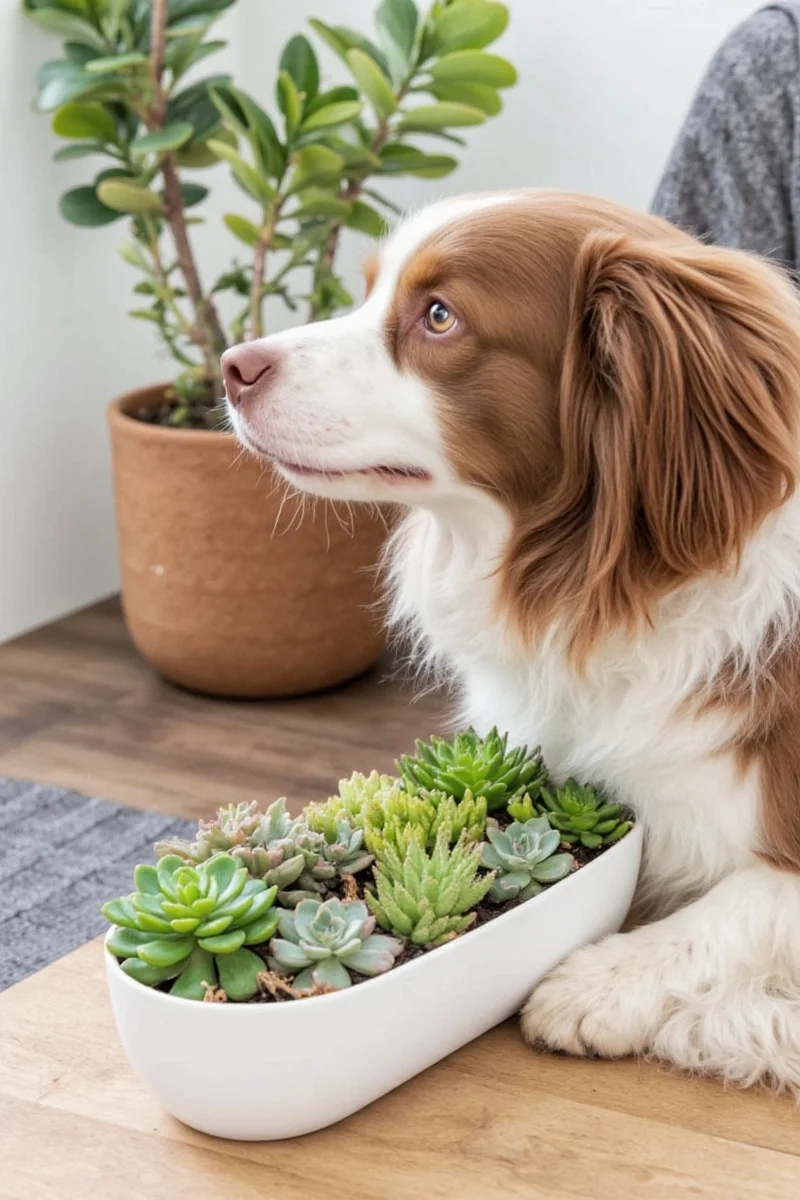
Wall-mounted gardens save floor space and keep everything safely above paw level.
3. Add a Pet-Friendly Pathway

Create paths using non-toxic ground covers like sedum or gravel to guide your pet through the garden without damaging your plants.
4. Install Pet-Resistant Barriers
Use decorative fencing, pebbles, or even motion-activated deterrents to gently steer pets away from sensitive planting zones.
5. Create a ‘Chew Zone’
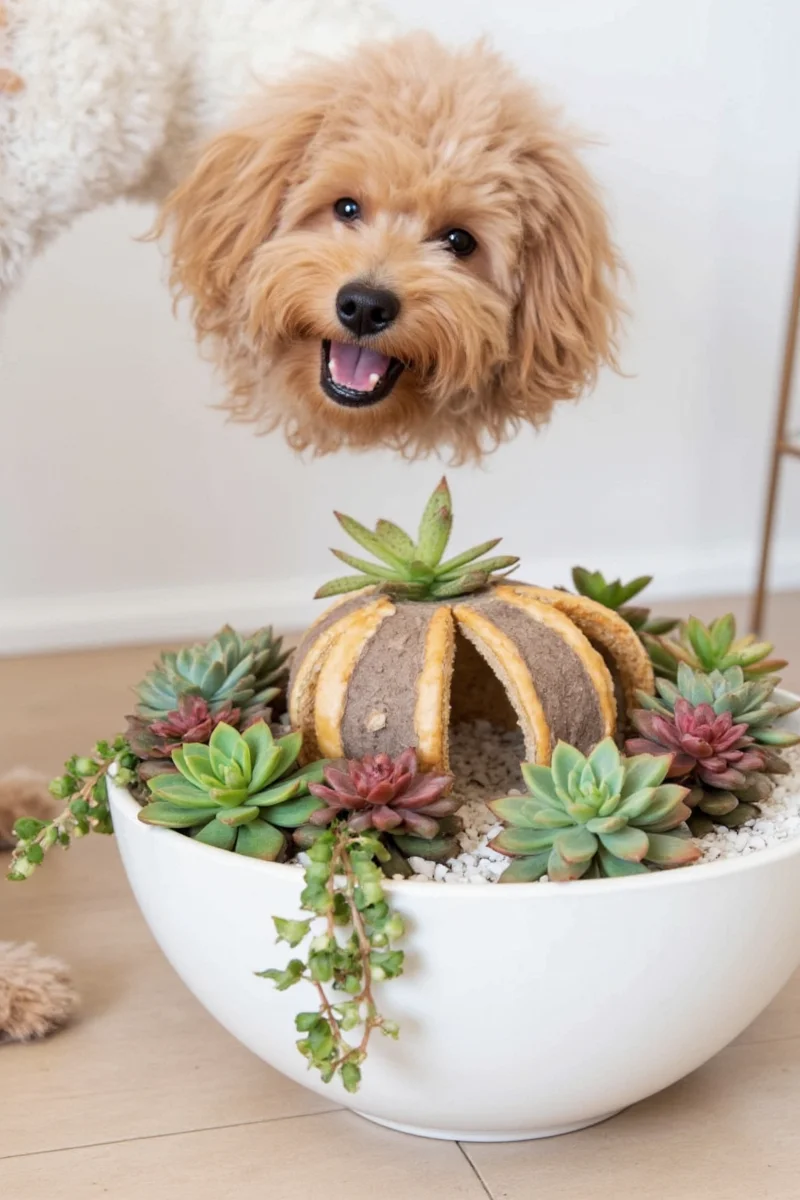
Give them their own area with tough plants (like agave) and chew toys to redirect their energy away from your prized specimens.
Shopping Smart: Must-Have Products for Your Pet-Safe Succulent Garden
To make your project easy and Instagram-worthy, here are some curated picks for your pet-integrated succulent garden.
Product 1: Hanging Planter Set – “PawProof Pot Collection”
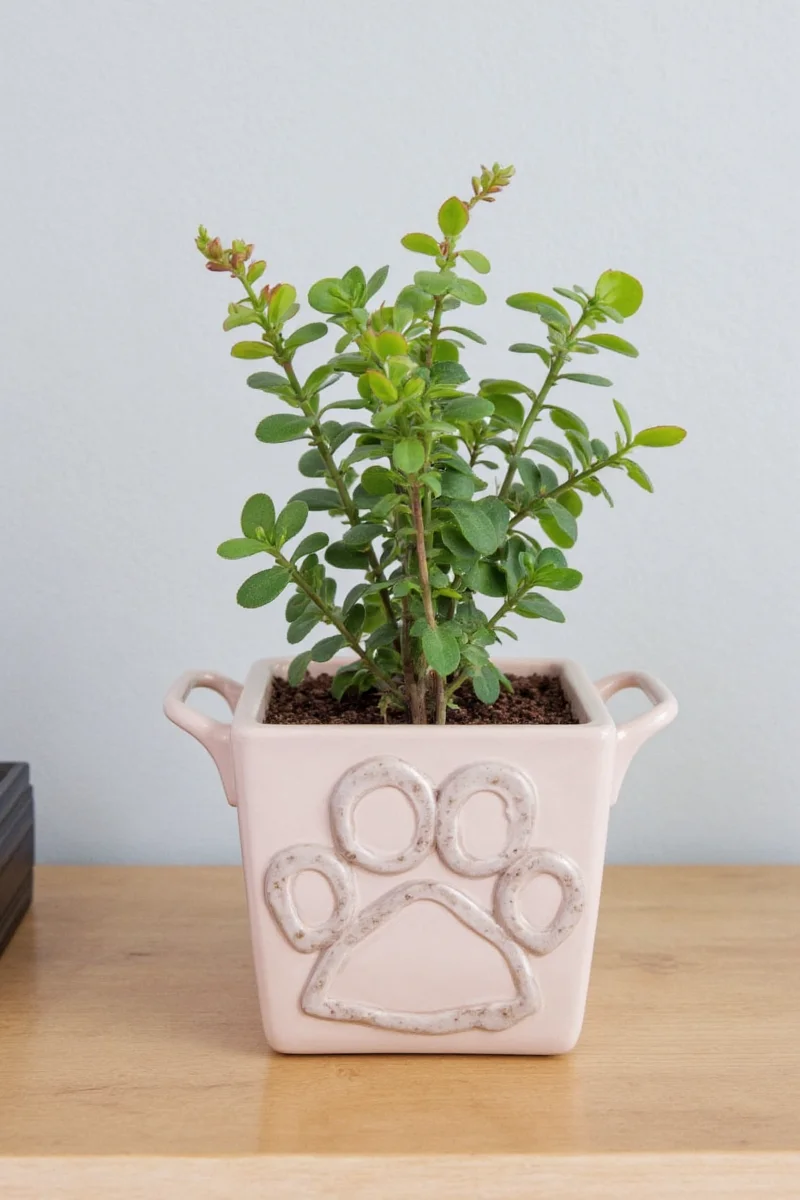
- Material: Organic cotton cord
- Capacity: Holds 4–6 inch pots
- Features: Adjustable height, mildew-resistant
- Best for: cats & small dogs
- 适用节日: Mother’s Day, housewarming gifts
Product 2: Raised Bed Kit – “ZenBox Gardener
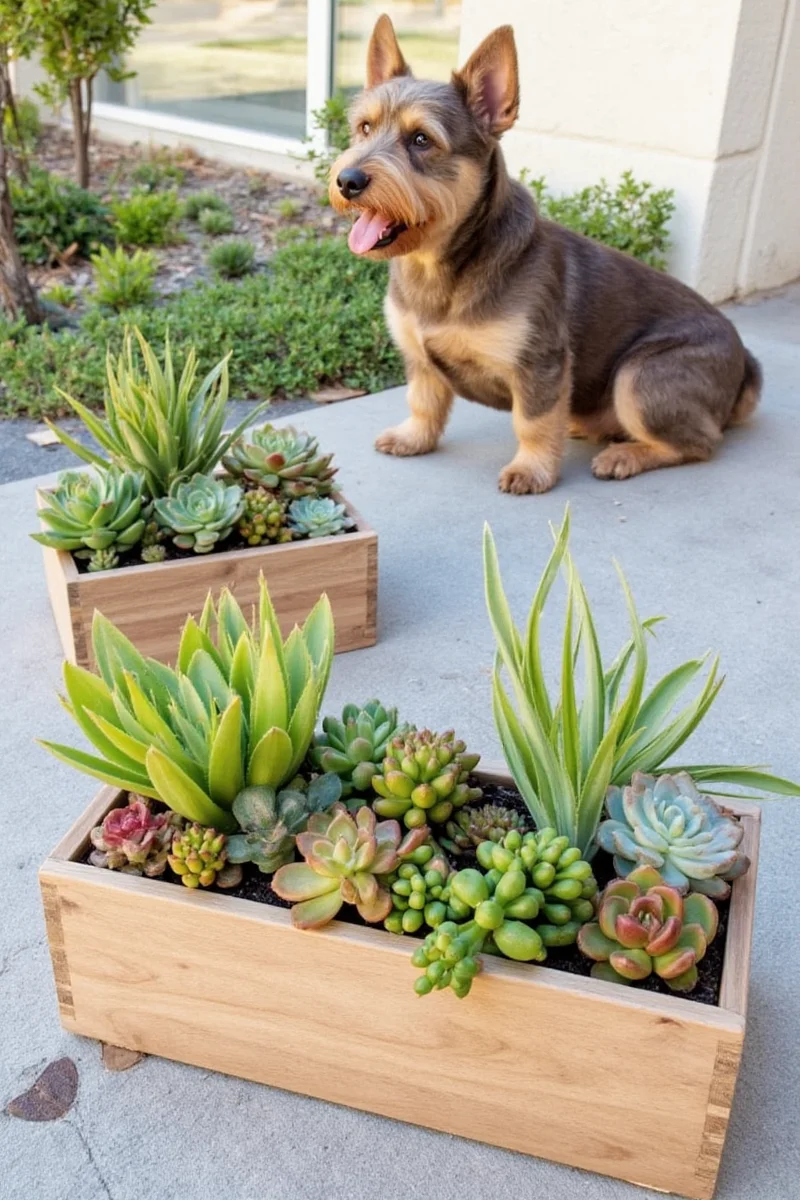
- Size: 3ft x 2ft x 1ft
- Material: Cedar wood with natural sealant
- Includes: Soil mesh, compost layer, seed tray
- 适用场景: backyard, balcony
- 适用人物: first-time pet parents
Product 3: Pet Deterrent Spray – “Sniff Off!”
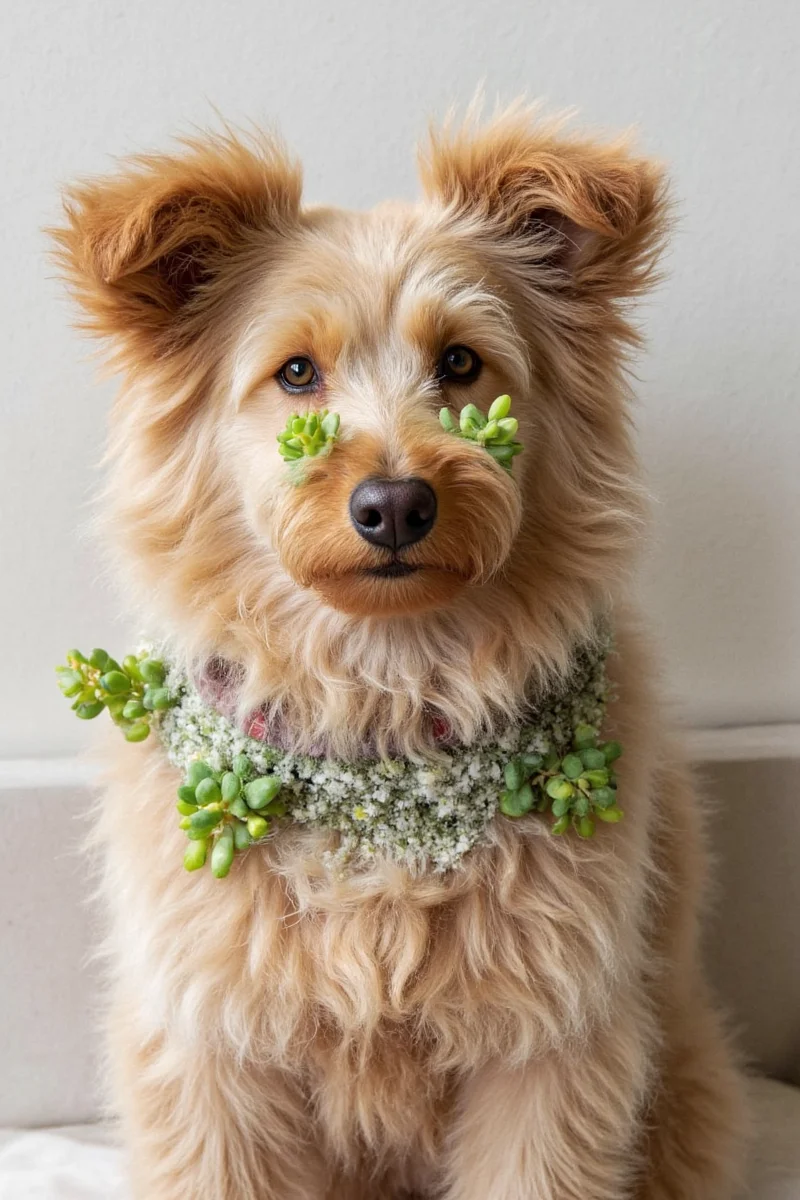
- Ingredients: Citrus oils, lavender, lemongrass
- Safe for: Dogs, cats, birds
- Smell: Fresh and herbal
- Best for: indoor use and training purposes
- 适用节日: Pet birthdays, Valentine’s Day for pets
Common Pitfalls to Avoid When Mixing Pets and Plants
- Choosing toxic varieties without supervision. Aloe and jade may look great but are dangerous for pets.
- Using chemical pesticides. Opt for organic solutions like neem oil to protect both your garden and your pet.
- Ignoring your pet’s habits. If they’re a digger, avoid ground-level plantings unless you want chaos.
Final Thoughts: Creating Harmony Between Your Garden and Your Pet
A well-planned succulent garden doesn’t just add curb appeal — it creates a peaceful retreat for both humans and animals alike. By choosing pet-safe species, arranging clever layouts, and adding thoughtful products, you can enjoy lush greenery without worrying about your fur babies getting into trouble.
Frequently Asked Questions (FAQ)
- Are all succulents safe for pets?
Nope! Some like aloe and jade are toxic. Stick to haworthias, echeverias, and burro’s tail for a safer option. - Can I grow succulents indoors with pets?
Absolutely! Just keep them on shelves or in hanging planters to avoid any nibbling incidents. - What should I do if my pet eats a toxic succulent?
Contact your vet immediately and bring a sample of the plant if possible.

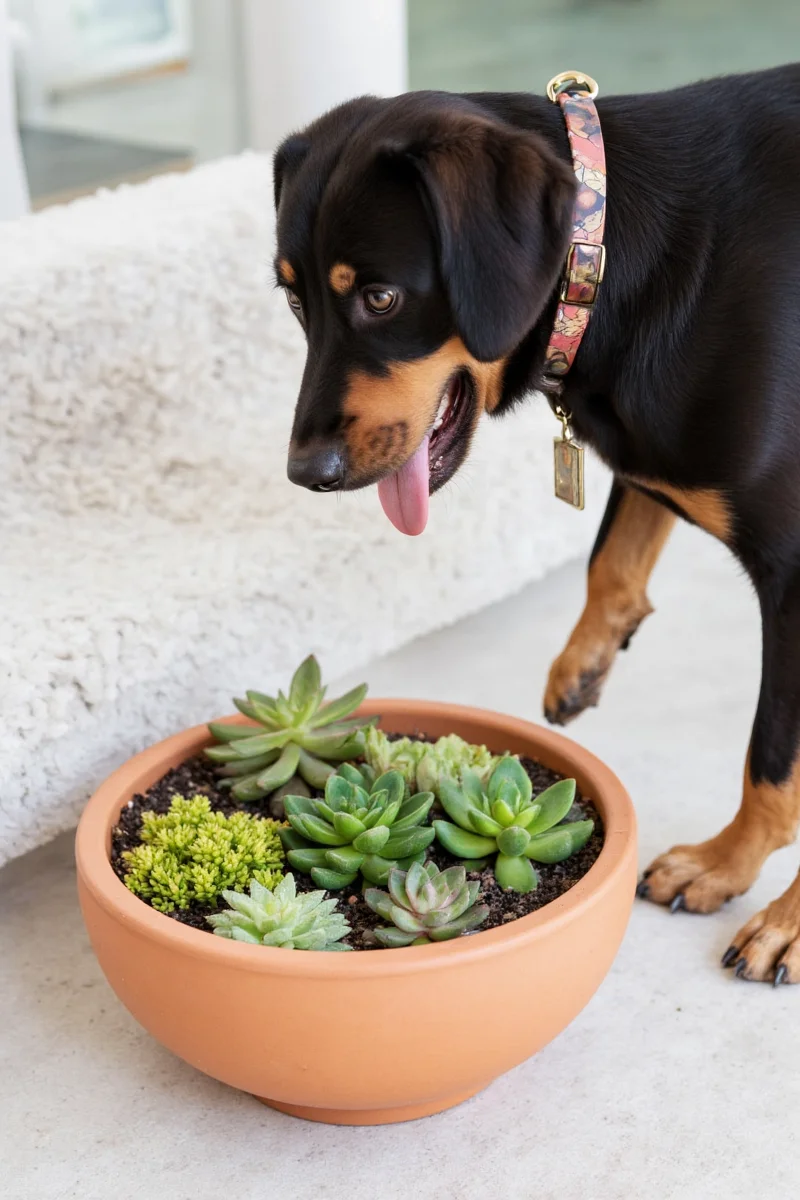









 浙公网安备
33010002000092号
浙公网安备
33010002000092号 浙B2-20120091-4
浙B2-20120091-4